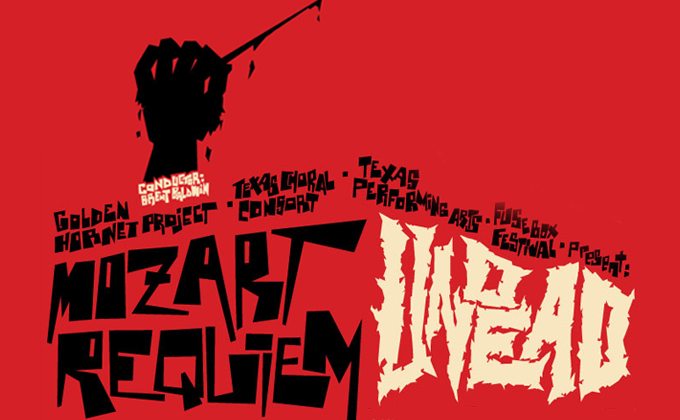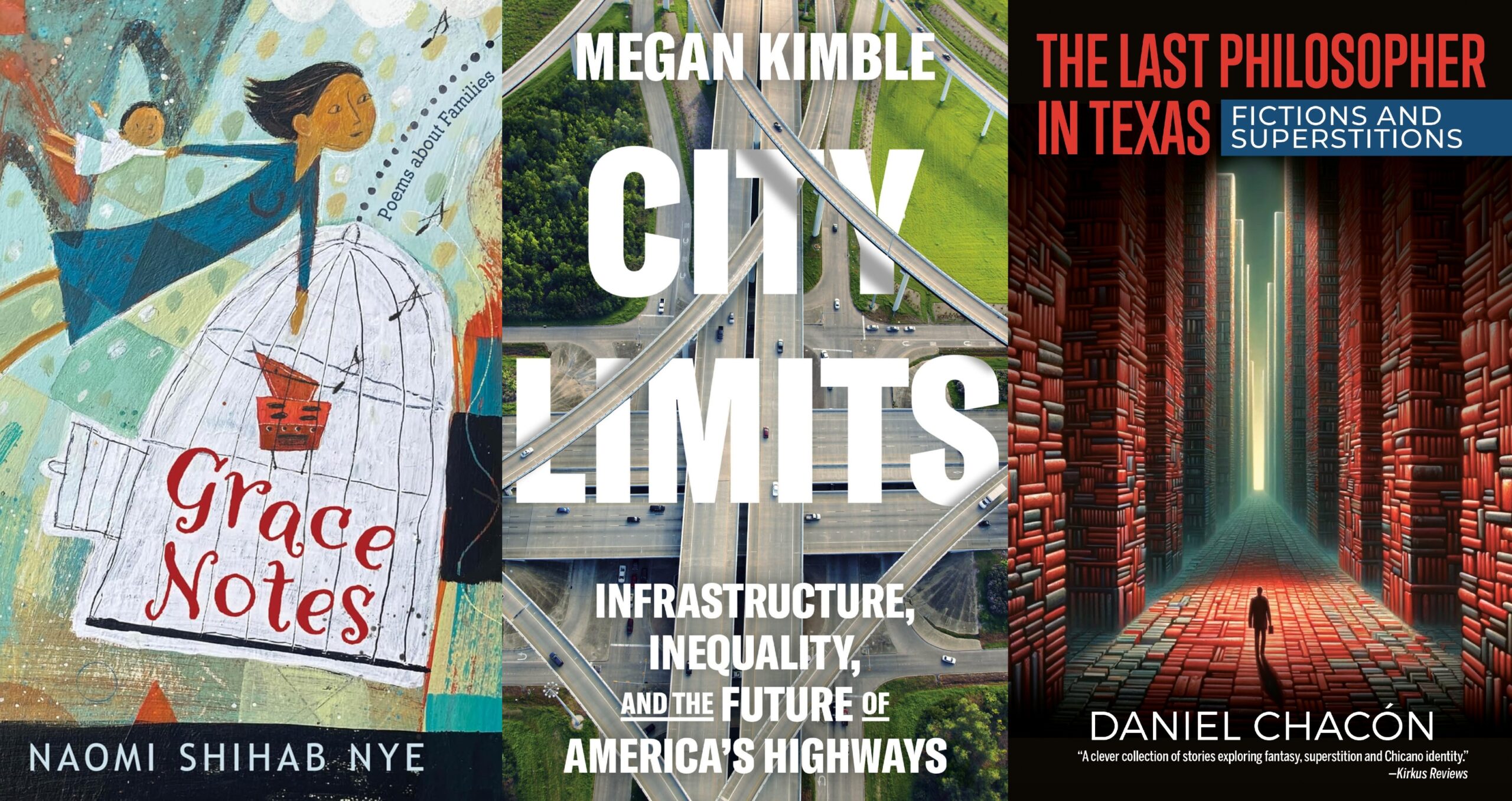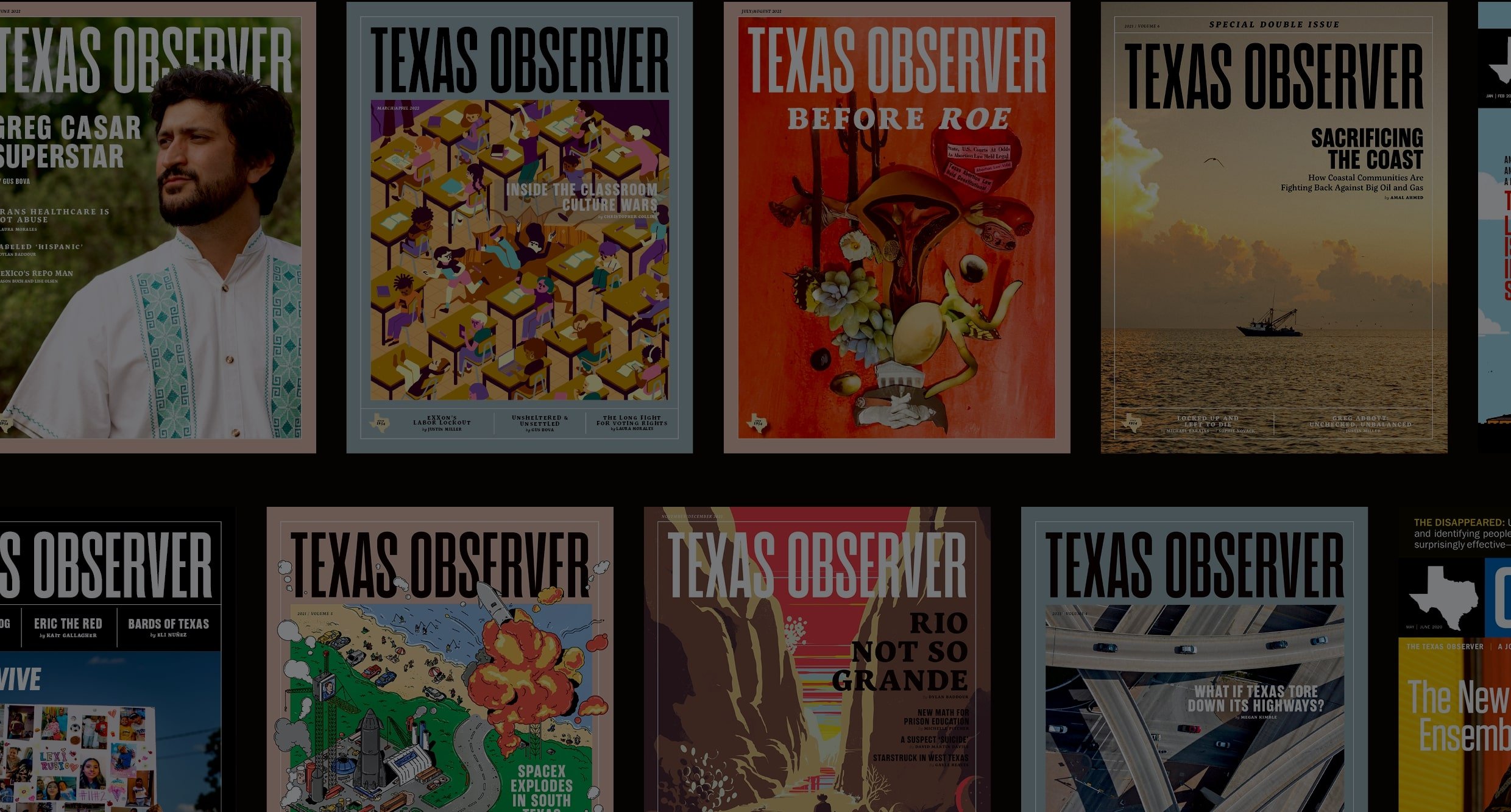
Q&A: Fusebox Festival Director Ron Berry
Austin’s Fusebox Festival will begin with a sort of anti-elegy, a zombie score. “Mozart Requiem Undead”—a re-imagining of Mozart’s “Requiem” comprising new compositions by indie artists including Glenn Kotche (Wilco), Caroline Shaw, DJ Spooky, Justin Sherburn (Okkervil River) and Adrian Quesada (Grupo Fantasma)—will be performed by a full orchestra and a 150-person choir. Graham Reynolds and Peter Stopschinski of Golden Hornet Project will lead the piece outside the French Legation Museum.
The directors call Fusebox a “hybrid art festival,” because it plays host to music, theater, performance art, documentaries, artist talks and round-table discussions. Additionally, Executive Director Ron Berry has begun referring to it as a “festival about festivals,” i.e., an opportunity to measure the impact of a festival on it host community, especially when that community is as festival-happy as Austin.
The performance of “Mozart Requiem Undead” will launch the 10th anniversary installment of the two-week festival (April 16-27 at venues throughout the capital), as well as a new Fusebox initiative called “Free Range Art.” That’s a branded way of saying that all festival events are free. Registration and the schedule are available online at fuseboxfestival.com.
The Observer caught up with Berry to find out why Austin needs a hybrid art festival, what Fusebox can teach about festivals in general, and why, after a decade, Fusebox has moved to a free model.
Matthew Irwin: How would you describe the Fusebox Festival to someone who has never attended or been to the website?
Ron Berry: It’s a 12-day festival of adventurous artists and projects from around the world working in a variety of different art forms. The festival takes place in about 20 different locations around the city. We view the festival as a platform for conversations and ideas.
MI: Can you provide some background on Fusebox?
RB: A lot of the work that was being made in Austin was happening in a vacuum, and we were really interested in creating a platform for that work so that you can live in Austin and make that work and have that work be seen by a much larger audience, and seen around the world, so we wanted to find other artists and other curators and presenters from around the country and around the world to come see the work. Then we also wanted to inject some new thinking into the local community by inviting artists from around the country and around the world.
MI: You mention what you call the Austin vacuum. In your experience, do some of the other communities you visit have a similar experience, if they’re not major artistic hubs?
RB: I think Austin has a pretty rich tradition in both music and film, but I also think that both of those art forms travel a lot easier. You can find a song and download it the same day. I think in regards to the live art—theater, dance, performance, any visual art, things you really need to be in the room with to experience—it is hard to engage with these things unless you’re traveling to New York, Berlin, Buenos Aires and Paris. I don’t think Austin is unique … that’s just inherent in those art forms.
MI: So over the last 10 years, what kind of exchanges have you witnessed by bringing diverse communities together through Fusebox?
RB: We’ve brought in artists who have been in residency here, so you’ve been able to take classes or workshops with them, and some who take the workshop with them actually build the project up with them, and there’s been opportunities for some hands-on work with these artists. There have been artists that we’ve featured that have done gigs that have toured outside of Austin because a curator came, saw their work, and then wanted them to do their work elsewhere—so that was something that was very exciting for us. It helps make Austin a more valuable place to live in as an artist—that you don’t necessarily have to go to New York or L.A. to have your work seen by people.
All of this to me is laying the groundwork [for] switching to a free model, especially if you take from the underpinnings of the festival this idea of exchange and encountering ideas and perspectives from outside of your immediate sphere. We felt like, when we were charging admission, that we were unmistakably targeting people we felt would want to buy tickets, and it would become this very insular conversation and exchange that was happening. We have a core audience, but they go see everything and engage with the festival very deeply, but aside from that, when people aren’t familiar with these artists and we are charging for each head, the likelihood of people going to see anything—because there’s more than one thing—is very low, so we felt like this was a smarter strategy for welcoming these people into the festival. And for me, that’s one thing I really love about this festival—that it’s kind of a place of discovery and you can discover artists that you’ve never heard of. I feel like Sundance, in the early days … was a place to discover independent thinking and voices, so I really love that about our festival and want to encourage people to take a chance on projects and artists.
MI: How might the festival be a place to have this conversation about what it costs to put on a production or hang a show?
RB: Yeah, I think that was another facet of this Free Range Art initiative, that we did want to talk about the economics of this work. Some of the artists I know are generally subsidizing their own work. Ticket sales are 10 percent of our budget, so in the first conversation about deciding to go free, pretty much the first question that everyone asked was, well how can you do that? And we’re like, really, ticket sales are a very miniscule part of our budget, and we needed all that, but we actually might make more money this year by going free. [In addition to private donations and grants, Fusebox successfully crowdsourced funding specifically for Free Range Art.] Or we’ll certainly be able to cover that amount. It’s very low-risk. We’ve actually already hit that number, so financially we’re totally fine… [W]e wanted to separate out the actual art and say, here’s this art that we believe in, we think it’s really important, and we think that everyone should have access to it, but at the same time let’s talk about the real cost of making this work. It’s not free, but it’s also not the $10 or $15 bucks that we usually charge. It’s much more than that, and we felt like in a way the ticket price was obscuring what was really going on.
MI: What does the real cost include?
RB: Our costs of presenting the work. The cost that the artist has put into filming the work, you know, months, years. It’s a real big question that we haven’t quite found the answer to, so it’s something we should talk about and look at.
A lot of this was inspired by a foundation in Brazil whose whole sort of mission is based around access. In São Paulo, they focus on three particular areas: the arts, athletics and dentistry. No one has dental coverage there. So they have this amazing center that runs a theater, an art gallery, they have a swimming pool there, and a basketball court, and a dentist office there. To me that was kind of hilarious, profound and amazing what it’s saying about arts and culture, and that it’s the same thing as going for a walk, or getting your teeth cleaned, brushing your teeth. To me that was such a radically different portrait of the arts in my mind, or understanding of the arts, positioning of the arts. It’s something that I really believe in as sort of the central part of being alive and healthy in the world, to have access to these things. Anyway, that struck me as profound, it was really about the proximity of those things all being in one complex.
MI: So how might Fusebox specifically address some of these issues or start this conversation?
RB: We want to have a sort of public forum there at the festival to talk about these things. One of the hopes is that along with this year’s festival we’re going to have a lot of information and a lot of data that we can compile and report back to the world—like here’s this big experiment that we tried and this is what we’ve found and this is what we think it means, at least in our particular situation.
MI: But will you have some things in the program specifically for table conversations?
RB: Yeah, I would love to do that. I mean, we have to do that. And we want to sort of touch on this conversation frequently, and also start the conversation around the reservation process and how people are learning and reading about the festival schedule. [The work is] not really free, so “free” is a problematic word, [but] it starts the conversation that it’s being paid for by someone else. So it’s almost like it’s a gift, and so there are other ways that we’re going to frame it so that we’re constantly reminding our audience that the attendance part is free … but there’s a whole process of how this conversation came into being and how these artists came into being in the same place and in this city together, and the whole thing is not actually free.
MI: Well, for me, a natural place to go when you start talking about free programming or free attendance is how the funding then determines what art is available, how that creates its own curatorial process.
RB: In many ways, it completely liberates it from any source of constraint. I mean, we’ve always been able to program pretty much anything we want, but when you’re relying on ticket sales, you have one or two shows that you really need to be your box office hits … We’re liberated from having to program these audience-pleasing projects. Not that we’re not pleasing our audiences, but it’s really about ideas and possibilities, and investigation, inspiration, all these things. We really love small, intimate projects and usually have a handful of these, but then you tie up all your ticket sales on projects only 16 people at a time can go see. But those are often some of my favorite experiences, and I really believe in creating the sort of tangible relationship with the work. So hopefully, with this particular model, we are liberated even more.
MI: I want to spend a minute on Fusebox as a festival about festivals idea.
RB: So this is something that we’re very aware of, like last year, I think, there were four or five other festivals going on while Fusebox was going on. It’s crazy. In some ways I think for years there’s been an exploration of a festival as an idea, as a thing, and what can a festival do that other things can’t? Specifically, what can our festival do that these other festivals aren’t? So that’s been central to our mission, and a joyous process.
MI: What, then, is Fusebox’s place in Austin, a city of festivals?
RB: One of the things that we’re doing aside from the specific programming that I think is unique to Austin, is we’ve been interested in using the mechanism of festivals to explore place; so we’re not just doing stuff in Zilker Park, and we’re not just doing stuff in clubs, but we worked with a composer to write a piece of music for his entire neighborhood. He went to the library and checked out a map, then you’d walk through this neighborhood and listen to this piece and the individual instrumentations of the piece were housed in different locations, so like the cello would be in someone’s study and then you would walk a couple more blocks and hear the violin. It was a unique musical experience, and it was also a way to encounter this neighborhood in a way maybe you never encountered it. So that’s an example of using the festival to investigate and encounter place that feels pretty different and unique from a lot of other festivals.
We’ve also been interested in food and the role that food plays; we’ve found it a really creative industry. We’ve partnered with a lot of chefs and bartenders who get really creative with it. Food and drink are such natural facilitators of [conversations]. So how can we use food and drink in organic ways to help facilitate more conversation? Often when I go to a conference or festival, maybe I see something that I really love, but often my favorite part is having a beer with a couple of people that I met and talking about the world.
MI: You talked about gathering some of this information and giving it back, and at the last Fusebox, at one of the round-table discussions, was this idea of what is a festival: Is it just a one-shot, or is there year-round programming? How much have you thought about these things in terms of how you program or organize Fusebox?
RB: That’s a great question. More and more this defines a different sort of relationship between artist and audience. I really do view all of this work as an ongoing conversation. And so the festival is a moment in a timeline where we can provoke and facilitate a lot of questions and conversations, and ideally these conversations continue after the festival and leading up to the next one. I think this is one area that we need to do more work on and put more resources toward helping to facilitate that conversation year-round.
MI: You know Austin is Richard Florida’s favorite town, and in his model, festivals are the jumpstart for the “creative economy,” and they may or may not continue in whatever forms, but the idea that they jumpstart a local culture—how does that line up with your own view?
RB: I certainly think that festivals play a huge part in the cultural landscape and help make Austin an exciting, attractive place to live. But the number, quality, atmosphere, I think, plays a part in the growth of Austin. To me, festivals are particularly exciting in that they provide an opportunity to encounter a bunch of different ideas and perspectives in such a concentrated period of time. They are inherently good at that, in many ways that’s what they are. Even if you’re just looking at a music festival, even at a genre music festival, there are still different styles and personalities and a different sort of message within that festival, and that’s exciting.
MI: I was just thinking that one of the things that I really enjoyed about Fusebox is that you don’t feel like the city is turning itself over to the festival, like with South by Southwest or the Austin City Limits Festival.
RB: We love that about it too. We also like this notion that we have these sort of hubs where we invite people and let the artists hang out, so as an audience member you can hang out with the artists, and I think that’s really cool, and definitely part of what we’re wanting.

